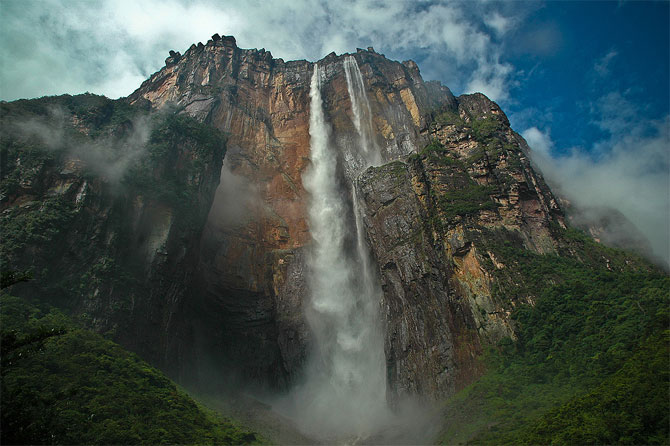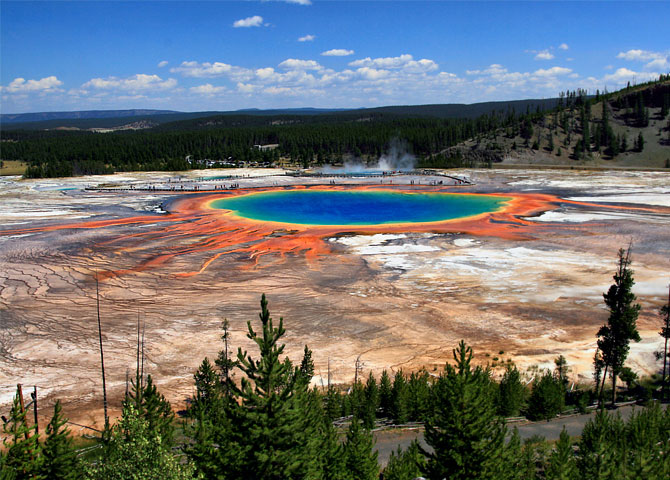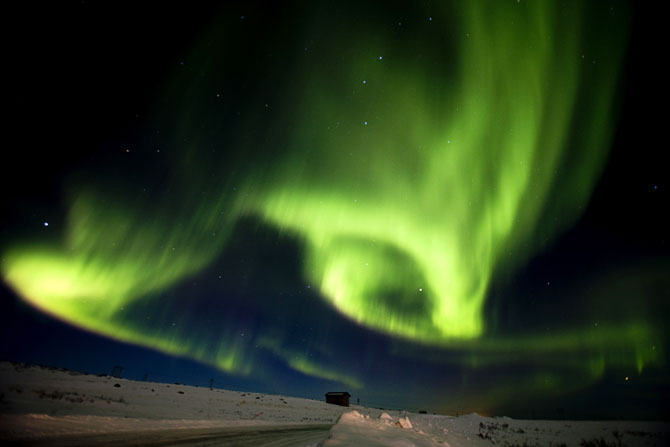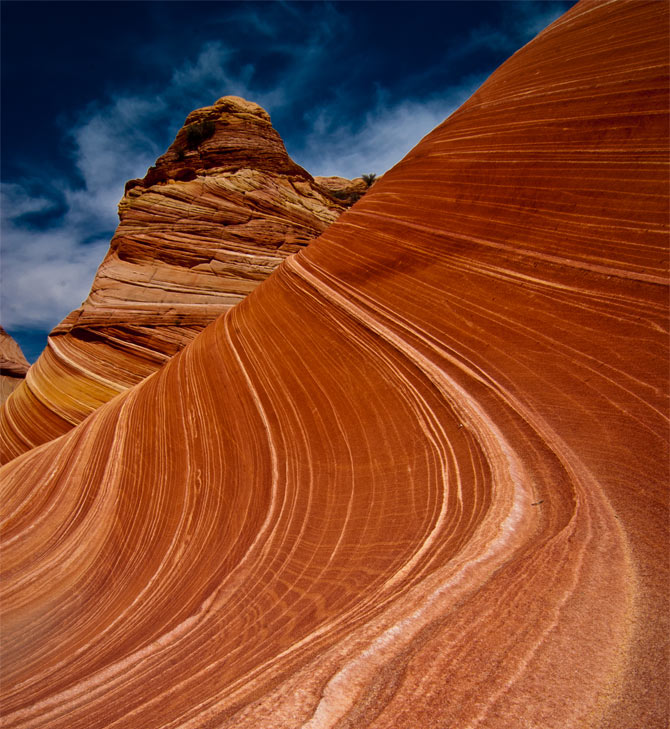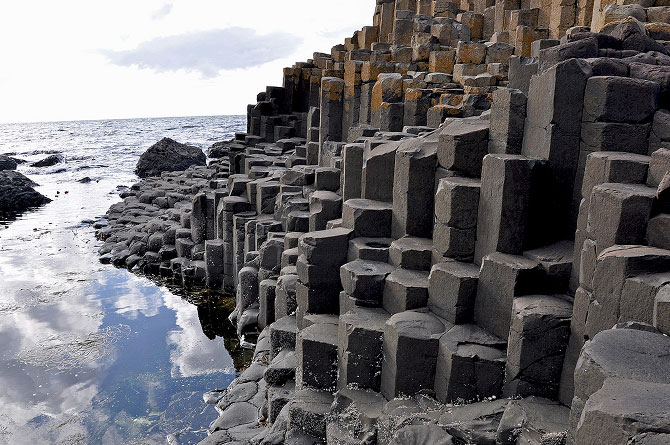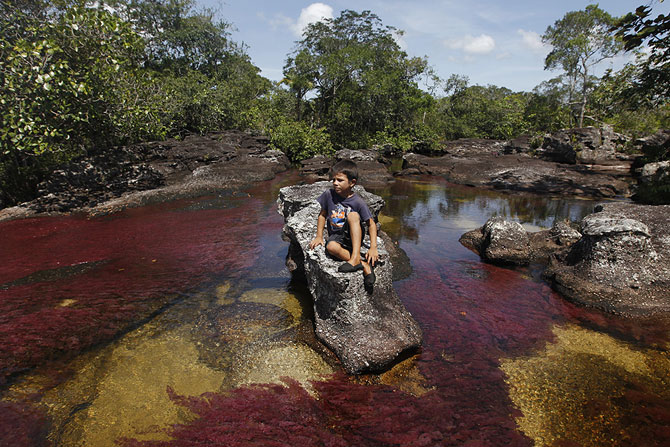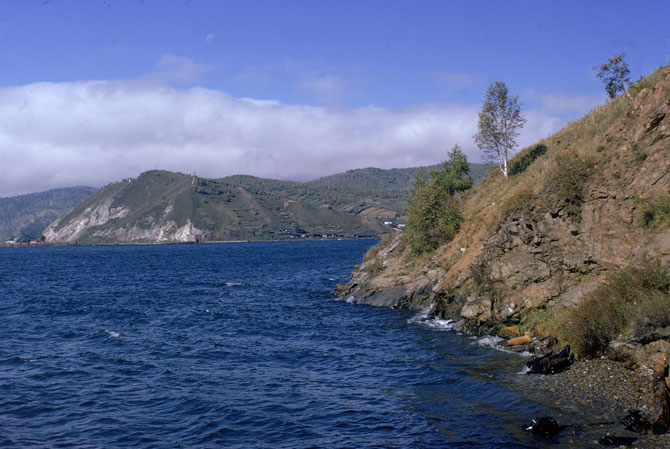 | « Back to article | Print this article |
Unbelievable natural wonders that will take your breath away
From the Turkmenistan's Door to Hell to Norway's Northern Lights, these scenes are to be witnessed to be believed.
It isn't very difficult to forget the enormity (and the beauty) of our planet.
Russia's Lake Baikal, the Paria Canyon of Arizona and Utah, the Giant's Causeway of Northern Ireland and the Angel Falls of Venezuela are just few of the hundreds of natural wonders in this world are humbling reminders of our place in this world and just how little we've seen of it.
Read on and be amazed!
We start out with the Great Blue Hole is an underwater sinkhole, a vertical cave so to say, located just off the coast of Belize City, the Central American country of Belize, The Great Blue Hole stretches some 1,000 feet across and 400 feet deep.
Believed to have been formed during episodes of glaciation at a time when sea levels were low, the Great Blue Hole was made famous by the French naval officer and explorer Jacques-Yves Cousteau who declared it one of the top ten scuba diving sites in the world way back in 1971.
Derweze Gas Crater, Turkmenistan
The Derweze Gas Crater quite simply has to be the most unreal phenomenon in this world.
Located in Turkmenistan, Derweze is a village about 260 km north from Ashgabat, the country's capital in an area rich in natural gas.
In 1971, Soviet geologists looking for oil happened to accidentally tap into a cavern of natural gas that caused the ground to collapse, taking with it the entire drilling rig!
To prevent discharge of poisonous methane gas in the atmosphere, the good Soviet folks decided to burn it off… and set fire to it.
The idea was that it would use up all the gas in a few days and would all be okay.
It has been over 40 years since but the 'Door to Hell' continues to stand testimony to the genius of the Soviet geologists.
Even though the cause of this strange sight (that can be seen from miles away on a clear dark night) is manmade, the fact that it's survived this long makes it no less a natural wonder than any of the ones listed here.
The 'Door to Hell' is about 230 feet wide and some 66 feet deep.
Angel Falls, Venezuela
In the Native American Pemon language, Venezuela's Angel Falls are called Kerepakupai Vena or the 'waterfall of the deepest place'.
The picture you see above shows a direct plunge of over 2,648 feet making it the world's highest uninterrupted waterfall.
Dropping over the edge of the Auyantepui Mountain in the Canaima National Park, a UNESCO World Heritage site, the Angel Falls are one of Venezuela's top tourist attractions.
Reaching the Falls however isn't very easy since they're located in an isolated forest. The most recommended route to take is a flight from Puerto Ordaz or Ciudad Bolívar to Canaima camp followed by a river trip to the base of these falls.
The trips are conducted between June to December when the rivers are deep enough for the curiaras or canoes that the guides use.
The Grand Prismatic Spring, USA
The largest hot spring in the US and the third largest in the world, the Grand Prismatic Spring, located in Yellowstone National Park is better known for its unique colour that matches the rainbow dispersion -- red, orange, yellow, green and blue.
About 300 feet wide, the first records of the spring's discovery date back to 1839.
The secret behind its striking colours are because of pigmented bacteria that are part of the microbial mats, which grow around the edges of the spring.
These mats themselves derive their colour from the ratio of chlorophyll to carotenoids as well as the water temperature which helps breed different bacteria at different times.
Thus the colours of these mats also vary from season to season -- ranging from orange to red in the summer and shades of green in the winters.
The very centre of the pool is sterile thanks to the high temperature and is therefore blue in a way that few other water bodies can be.
Northern Lights, Norway
There is probably nothing more humbling than witnessing a splendid light show in the sky.
The Aurora Borealis or the Northern Lights are an astronomical phenomenon caused when large quantities of particles thrown out of the sun during solar explosions collide with the earth's magnetic shield and are led towards a circle around the magnetic North Pole interacting with the atmosphere.
What you see in the picture above is a result of this unique natural phenomenon (and takes place about 100 km above our heads) and is best witnessed from autumn to mid-April after which it gets too bright to see.
Shilin Stone Forest, China
Located in the Yunnan Province in China, the Stone Forest or Shilin is essentially a collection of limestone formation.
Spread across 350 sq km, the stone needles are some 270 million years old and spring from the ground and look like petrified trees lending the illusion of a stone forest.
According to legends, the forest was a beautiful girl who turned herself into a stone in the forest after she was forbidden from marrying the man of her choice.
Paria Canyon of Arizona and Utah, USA
Popularly known as The Wave, the picture you see is of a sandstone rock formation located in the Paria Canyon near the Arizona-Utah border in the USA
Controlled by the Bureau of Land Management (or BLM), The Wave requires a permit to access it with only 20 permits being granted every day. Of these ten are available by an online lottery system held four months before the date of the proposed trek and the other ten 24 hours before.
During the peak season -- April, May, September and October -- there are hundreds queuing up for the permit.
The reason for the restricted access is to avoid erosion and if you do get to see it, it's probably a matter of luck.
Even so, it isn't such a bad idea to visit the 'Second Wave' that isn't very far off as well as the rest of the Coyote Buttes of which The Wave is a part.
Giant's Causeway, Northern Ireland
About 40,000 interlocking basalt columns that are a result of an ancient volcanic eruption form this unique landscape that was declared as a World Heritage Site by UNESCO in 1986 and a National Nature Reserve by the Department of the Environment for Northern Ireland in 1987.
The tallest columns are about 39 feet high while the lava that has been solidified in the cliffs tends to be about 92 feet thick.
While science has provided us with answers of its origin, there are several legends that offer far more interesting stories.
The most popular of them involves an Irish giant called Finn McCool (really how cool is that name!). According to the story, the causeway is just the remains of a bridge that McCool had built connecting Ireland to Scotland.
Cano Cristales River, Colombia
Often called the River of Five Colours or the Liquid Rainbow, Colombia's Cano Cristales River is a sight to behold.
The five colours include blue, green, yellow, black and more so the red of a particular kind of riverweed that grows on its bed.
It is advisable to visit the Cano Cristales between July and December since that is when the riverweed blossoms fully.
Lake Baikal, Russia
Located in Southern Suberia, Lake Baikal is believed to be the oldest lake on earth estimated to date back to over 25 million years.
Even though it is only the seventh largest -- it has a surface area of 31,722 sq km -- in the world, Lake Baikal holds 20 per cent of the planet's unfrozen surface freshwater supply.
It is also home to over 1700 species of plants and animals, over 66 per cent of which can't be found anywhere else.
Needless to say, Lake Baikal is also a UNESCO World Heritage Site having been declared one in 1996.


